| |
|
| |
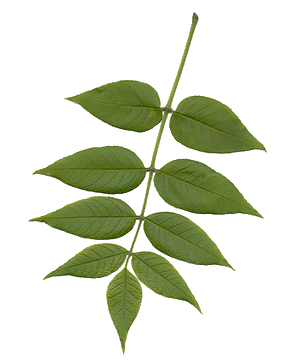 |
| |
Blue Ash Leaf |
Identification:
Look for the fallen leaves on the ground beneath the station tree.
The leaves are pinnately
compound, smooth above and paler and hairy
below. The 7 to 11 leaflets are 3 inches
to 5 inches long and stalked. The
leaflet
margins are
serrate. The leaves are 8
inches to 12 inches in length. Compare these leaves to those
of the White Ash. Note the opposite branching pattern of this
tree.
| |
|
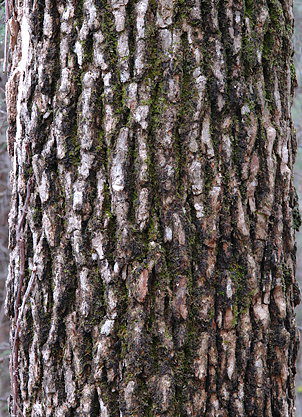 |
|
|
Blue Ash Bark |
The bark of the Blue Ash is bluish
gray to brown-gray, and is thick-furrowed with interlacing ridges.
As the tree ages the bark becomes scaly, then shaggy.
| |
|
| |
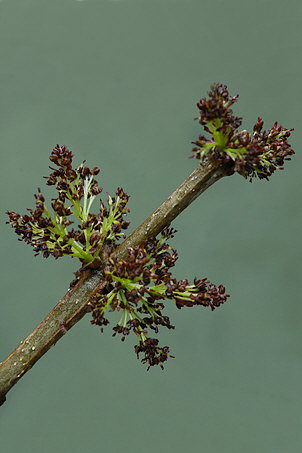 |
| |
Blue Ash Flowers |
| |
|
| |
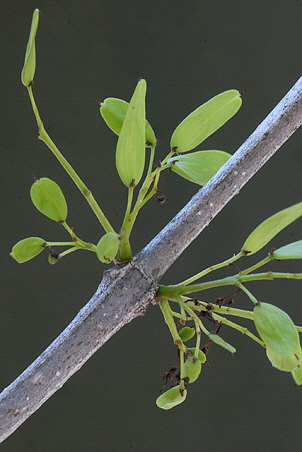 |
| |
Blue Ash Developing Samaras |
The flowers of the Blue Ash are
perfect (having both
stamens and
pistils) and appear in panicles
before the leaves appear in April. Binoculars are helpful in
looking at them when they are high in the tree.
Later in the spring and early summer you may see the
samaras appear.
The shape of the Blue Ash samaras is quite different from the White
Ash samaras, with the seed being completely enclosed by the wing in
the Blue Ash.
Other Uses
and Lore:
The Blue Ash takes
its common name from the fact that twigs or inner bark immersed in
water will turn water blue. In fact the pioneers used the twigs and
bark to make a blue dye. The species name, quadrangulata,
refers to the four-sided twigs (see image on previous page). The
wood is heavier than white ash, and is very strong and
course-grained. It is used for rough construction, fence posts, and
for handles for spades, shovels and similar tools. It is a common
lumber for cabinetry and furniture.
A variety of
wildlife eat the seeds, including eastern gray squirrel, eastern
cottontail and white-tail deer.
The
Trail From Station Eight to Station Nine
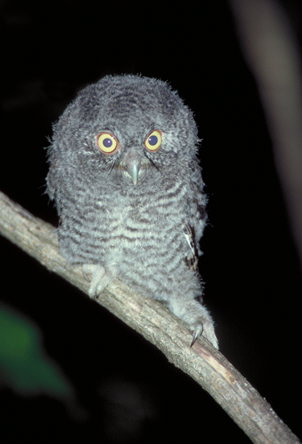 |
| Young Eastern
Screech-Owl |
From Station
Eight, the trails begins to flatten out a little, and the limestone
outcroppings that have been present for so long on the left side of
the trail now begin to disappear. The trail passes through
several Eastern Redcedar thickets. These conifers provide
shelter for many species of birds, including owls like the Eastern
Screech-Owl. In late Spring listen for birds making scolding
notes. They may be mobbing a newly-fledged Eastern Screech-Owl
like the one at right. The owl shown is only about four inches
tall. Station Nine will be on the right side of the trail.
|

